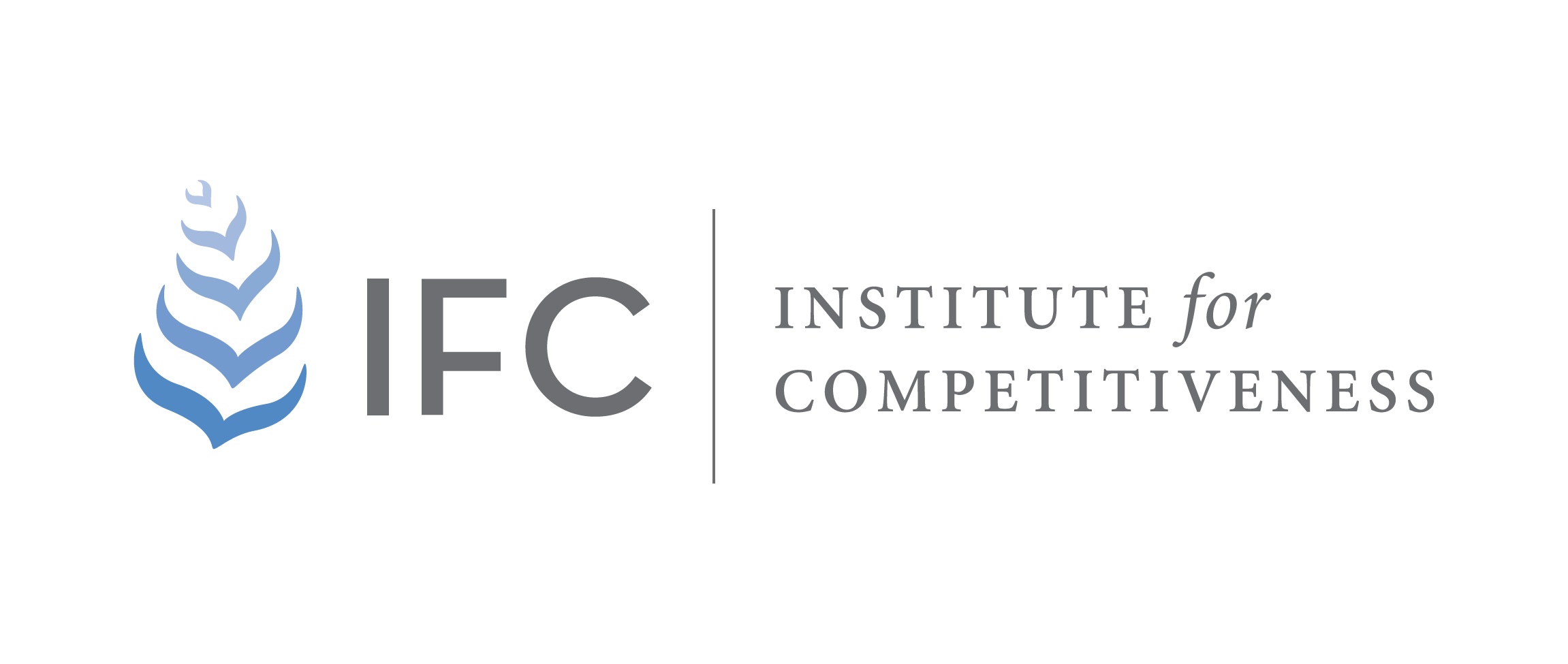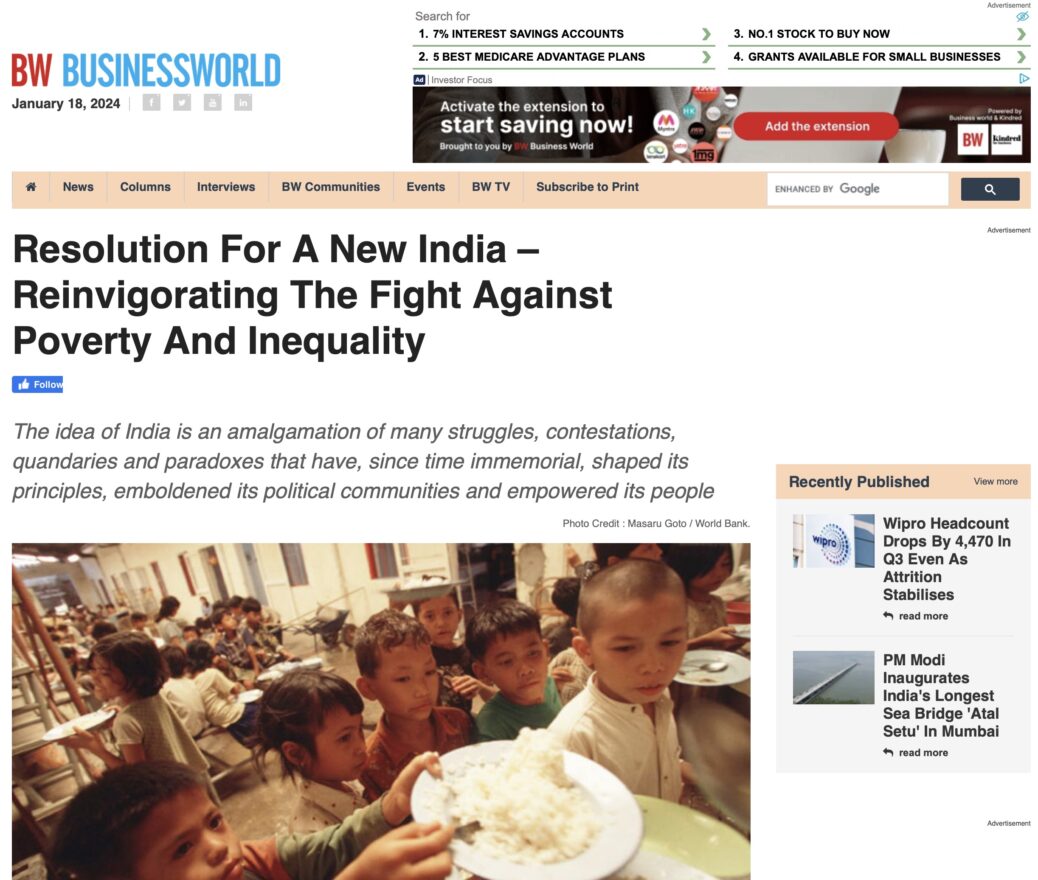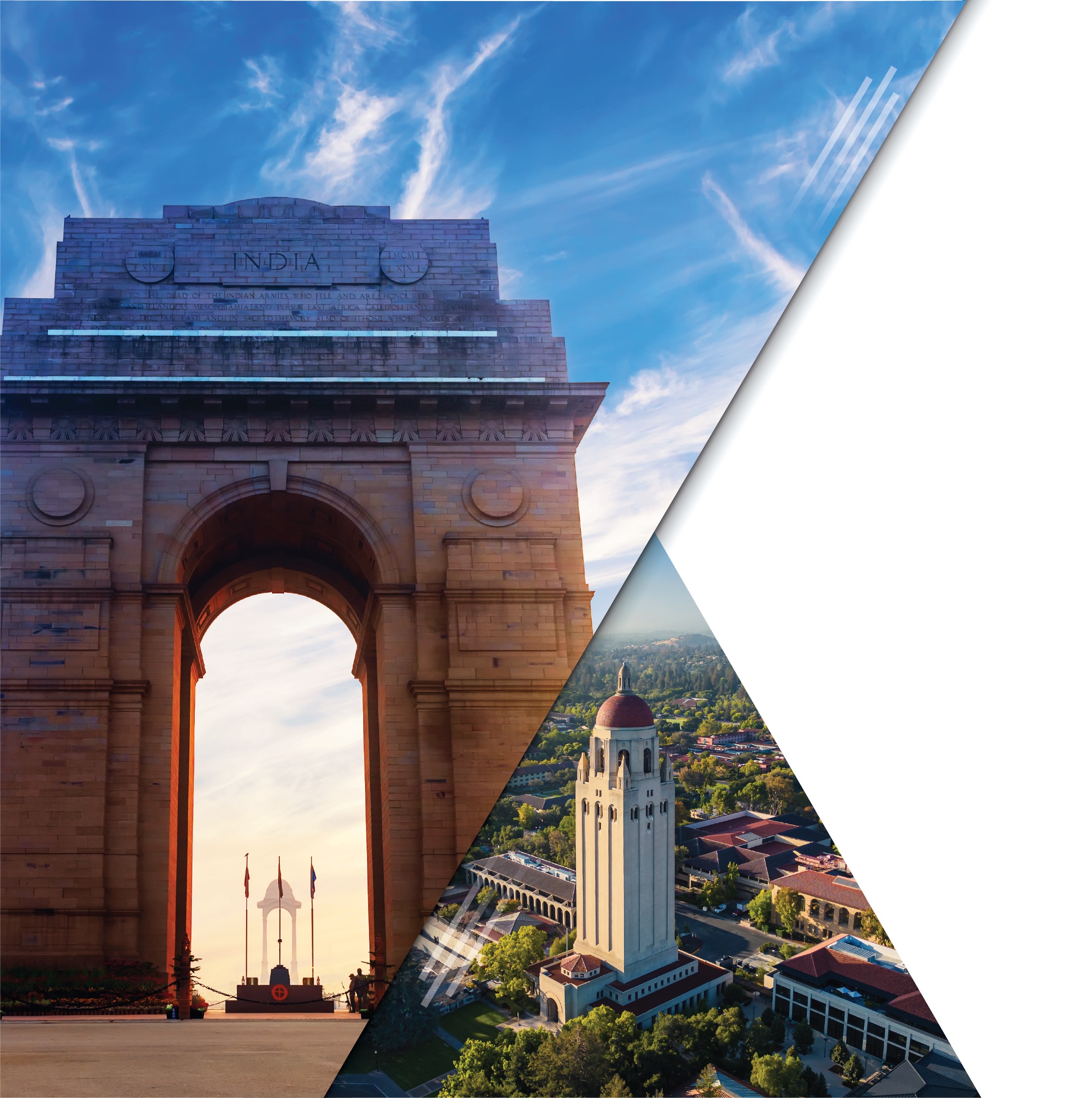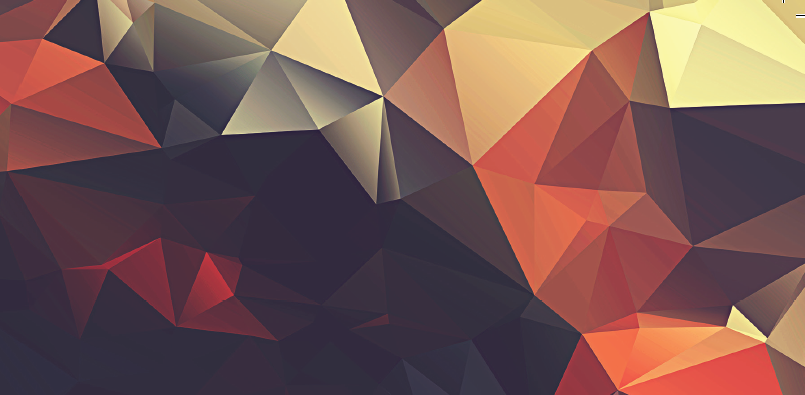Amit Kapoor and Jessica Duggal
“More and more it is being realised in other parts of the world that we in India are engaged in a mighty adventure. To build up this country and to solve the problems of poverty and unemployment in a democratic way on this scale is something that has not been done anywhere.” (PM Nehru)
The idea of India is an amalgamation of many struggles, contestations, quandaries and paradoxes that have, since time immemorial, shaped its principles, emboldened its political communities and empowered its people. Our first Prime Minister, in his many letters to his Chief Ministers, expanded upon the duties of a government towards the nation and its people, emphasising upon nourishing the democratic ethos in the country. Seventy-five years ago, when our Constitution was enforced, our first President echoed that the Republic of India was guided by the tenets of liberty, justice and ensuring equality to its 359 million people (a number that has since risen). Years later, on the occasion of the 50th anniversary of Indian independence, Prime Minister Deve Gowda highlighted that the fruits of development should be distributed equitably and the government’s commitment to social justice. These ideals, as espoused by our leaders, have gone a long way in consolidating democracy in our country and making it resilient to the many challenges we faced in the course of the last seven decades. It is these principles that shape our country today – the India of the “New Age”.
Many issues plague our country. Some challenges have emerged recently in the context of shifting global movements. Others are old, just presenting themselves in newer manifestations. Of these, some, like socioeconomic inequality and poverty, have been so longstanding that they have become chronic in nature and resulted in a cycle of generational deprivation. Even as the country gained independence in 1947, the scars of colonial rule left an indelible mark on the socioeconomic landscape. The newly independent nation inherited a vast population grappling with poverty, and the subsequent decades saw efforts to bridge the divide through economic policies and social initiatives. In time, as the world around us kept changing, so did the magnitude of these issues, with the already marginalised population being more exposed and vulnerable than ever. Sudden economic shocks in the wake of reforms, wars, epidemics and the pandemic pushed this vast section into the deeper trenches of backwardness, which stunted growth and social mobility across generations.
Adding to the complexity, poverty and inequality in our country have never been purely economical, divorced from social background. Social conditions (accessibility and status) have always pronounced economic backwardness, making poverty multidimensional in nature. While this associative relation has never been denied, it has only gained attention recently, taking us into a new chapter of addressing poverty and inequality in our country. In 2004, Prime Minister Vajpayee also identified poverty as multidimensional, extending beyond income and impacting factors like education, health, etc., famously calling for a war on unemployment, poverty, and backwardness. In recent times, we have come to depend on the Multidimensional Poverty Index (MPI), which was developed by the UNDP and Oxford Poverty & Human Development Initiative (OPHI), which seeks to provide a global measure of poverty resting on non-monetary pillars such as health, education and standards of living. It takes into consideration variables such as nutrition, child mortality, sanitation, and access to clean drinking water, among others. A National Multidimensional Poverty Index is released by NITI Aayog, with a Progress Review being released in December 2023. As per the National MPI Progress Review 2023, essentially a follow-up to the baseline report released in 2021, a steep decline in multidimensional poverty was observed, with as many as 13 crore people escaping multidimensional poverty between 2015-16 and 2019-2021. A comparative analysis between the three National Family and Health Survey (NFHS) cycles (2005-06, 2015-16, and 2019-2021) does reveal a significant improvement in the standard of living outcomes in India in pillars like nutrition, child mortality, years of schooling, school attendance, cooking fuel, sanitation, drinking water and electricity, with the percentage of deprived population falling across the years.
While welfare schemes have played a massive role in improving these metrics, heralding this as a victory is premature. Concerns regarding the comprehensiveness of the MPI as a complete measure remain. Measuring the distribution of goods like cooking fuel or taps to ensure clean water or constructing toilets to counter open defecation versus examining the functionality and usage of these amenities is an exercise we have not yet embarked upon. Additionally, the unavailability of proper data and unreliable survey cycles leave us handicapped in assessing the intensity of poverty in real time. Most of the assessments of India’s poverty rates, including by the World Bank, are a mere extrapolation of old data. Challenges in measuring poverty in the country have evoked severe debates over how we can measure poverty when we cannot define it. Lack of quality poverty monitoring mechanisms results in disparate analysis, which might always fall short of giving an accurate picture.
It is not to say that exercises like the MPI are not helpful. Instead, it is to say that MPI metrics alone will not help us gauge the actual depth of the situation. One can then say that what we need is a basket of solutions in our fight against poverty and inequality, which depends on taking certain structural decisions that need to be timely implemented if we want to see ourselves as a middle-income country in the coming decade or so. These include regularisation of data collection, processing, and timely release through a recalibrated mechanism of poverty data monitoring. This would also mean finding a balance between the MPI and an expenditure-based measurement, which helps us trace the economic cycle of a poor household along with its social embedding. Targeted social protection schemes that look at enhancing resilience as opposed to creating a dependency cycle are also crucial. Schemes that are modelled around direct transfers (especially non-cash transfers) and do not factor in logistical impediments to their proper usage do more harm than good and, therefore, must be carefully formulated.
Our “New India” also grapples with issues like digital financial inclusion, the changing nature of work, and climate change, which further excludes the poor as they cannot adapt to shifting contexts. These are not the problems our country and its leaders faced during the independence and many decades after. However, when we look back to their wisdom, we find continuity in ardent belief in tenets of social justice and equality. What we must strive for this year as a Republic is to hold these ideals close to our hearts and march ahead in this reinvigorated fight against poverty and inequality.
“We must remember that what our governments are doing today will set the tone for future administrations. The very powers that may be exercised, perhaps for adequate reasons today, may be exercised later for totally inadequate and perhaps even for objectionable reasons. It is always unsafe to weaken on principles.” (PM Nehru)
(Amit Kapoor is chair, Institute for Competitiveness and lecturer, USATMC, Stanford University. Jessica Duggal is researcher, Institute for Competitiveness).
The article was published with Business World on January 12, 2024.
























